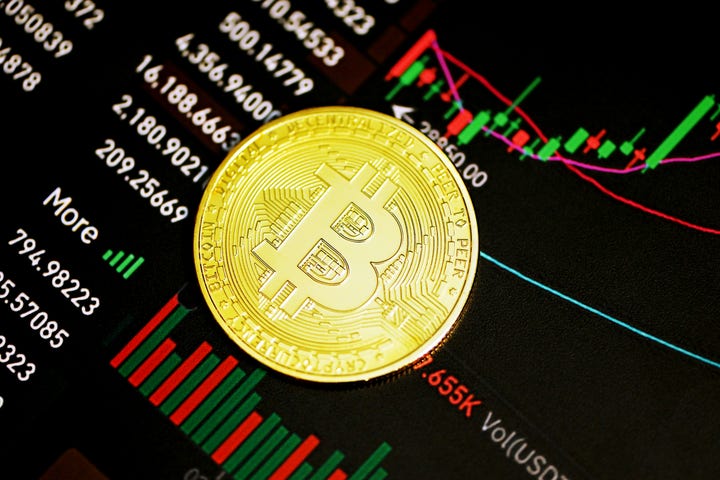Bitcoin's Issuance Rate Drops Below Gold's After Recent Halving: Glassnode Bitcoin, Gold, Glassnode, Benzinga, Halving by https://www.benzinga.com/

AI Insights:
Simple Explanation:
Bitcoin is a digital money that people can use to buy things online or trade with others. It is created in a process called "halving", which happens every few years and reduces the amount of new bitcoins made. Recently, this halving happened again and now there are fewer new bitcoins being made than before. This means that bitcoin is becoming harder to find and more scarce, like gold. In fact, some people say that bitcoin has become even more rare than gold for the first time in history. Read from source...
Critical Perspective:
- The title of the article is misleading and sensationalized. It implies that bitcoin has surpassed gold as the scarcest asset, which is not true. Bitcoin's issuance rate is lower than gold's, but that does not mean it is more scarce or valuable. Scarcity and value are subjective concepts that depend on various factors, such as supply, demand, utility, adoption, etc.
- The article relies on Glassnode data, which is a blockchain analytics company that has a vested interest in promoting bitcoin and its network effects. Glassnode's data may be biased or incomplete, and it does not necessarily reflect the true state of the bitcoin market or the global economy.
- The article uses emotional language and phrases, such as "historic handover", "title of scarcest asset", "significant milestone", etc. These words are meant to evoke a sense of excitement and urgency among the readers, but they do not provide any solid evidence or logical reasoning for their claims.
- The article does not address the potential drawbacks or risks associated with bitcoin, such as its volatility, energy consumption, security issues, regulatory challenges, etc. These factors may affect the long-term prospects and viability of bitcoin as a store of value or means of exchange.
Sentiment Analysis:
DAN: The article is bullish on Bitcoin and its scarcity compared to gold.
Investment Analysis:
We are not financial advisors. It's always essential for you to consult with a financial advisor and do your research before making any decisions about investments.
Based on the article titled `Bitcoin's Issuance Rate Drops Below Gold's After Recent Halving: Glassnode`, I suggest the following investment strategies for both Bitcoin and gold:
1. Buy and hold Bitcoin for the long term, as it is becoming scarcer than gold and has a higher potential for appreciation due to its limited supply and growing demand. The recent halving event has reduced the issuance rate of new bitcoins to below 0.83%, which is lower than the natural rate of gold at around 2.3%. This means that Bitcoin is becoming more scarce and valuable over time, unlike gold, which is subject to inflationary pressures from mining and other factors.
2. Diversify your portfolio with gold mining stocks and ETFs, as they can benefit from the higher prices of gold and offer leveraged exposure to the precious metal. Gold miners can also profit from cost savings, technological innovations, and exploration successes that can boost their margins and earnings. However, gold mining stocks and ETFs are subject to risks such as geopolitical tensions, operational challenges, environmental regulations, and market volatility, so they should be held for the long term and with caution.
3. Consider investing in digital securities and blockchain-based assets, as they can offer exposure to the emerging and innovative sector of decentralized finance (DeFi) and Web 3.0. Digital securities are tokens that represent ownership of traditional securities such as stocks, bonds, or commodities, and they can be traded on blockchain platforms that offer faster, cheaper, and more secure transactions. Blockchain-based assets can include cryptocurrencies, NFTs, gaming tokens, stablecoins, and other digital instruments that rely on distributed ledger technology for verification and authentication. Digital securities and blockchain-based assets are highly volatile and speculative, so they should be invested in with a high risk tolerance and a long time horizon.
4. Monitor the market trends and news alerts from Benzinga, as they can provide valuable insights and information on the performance and outlook of Bitcoin, gold, and other assets. Benzinga is a leading source of financial data and analysis that covers various sectors and markets, and it offers tools and features such as analyst ratings, price targets, trade ideas, and alerts that can help you make informed decisions and optimize your portfolio.